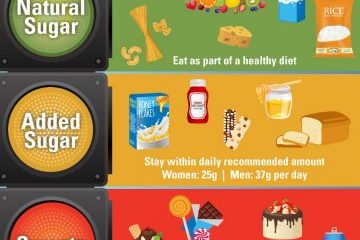Diseases & Conditions
Ways to Manage Arthritis

Ways to Manage Arthritis: Tips for Relief & Improved Mobility. Discover effective Ways to Manage Arthritis for relief & better mobility. Explore simple tips & tricks that can make daily life easier, glow natural wellness & more comfortable.

Quick exercises for finger arthritis relief & mobility
Ways to Manage Arthritis: Tips for Relief & Improved Mobility
Dietary Adjustments to Alleviate Arthritis Symptoms
Making dietary changes can have a profound impact on how you manage arthritis. Foods rich in anti-inflammatory properties can help reduce pain & improve mobility. A balanced diet plays a crucial role in overall health, particularly for those suffering from arthritis. Incorporating foods such as fatty fish, nuts, & olive oil can create a robust defense against inflammation.
You should also focus on reducing processed foods & sugary snacks that can exacerbate inflammation. Consuming a variety of fruits & vegetables is essential; colors like red, green, & yellow indicate the presence of antioxidants. These components can aid in combating free radicals that contribute to inflammation & joint pain.
Hydration is often overlooked but is vital for maintaining joint lubrication. Aim to drink plenty of water daily & consider herbal teas, which can provide additional anti-inflammatory benefits. Creating a meal plan that emphasizes whole foods, healthy fats, & adequate protein helps facilitate weight management a critical factor in alleviating pressure on joints. It can also be beneficial to consult a nutritionist for a tailored dietary plan that honors your individual needs.
| Anti-Inflammatory Foods | Benefits |
|---|---|
| Fatty Fish (Salmon, Mackerel) | Rich in Omega-3 fatty acids that reduce inflammation |
| Leafy Greens (Spinach, Kale) | High in antioxidants & vitamins that support joint health |
| Nuts (Walnuts, Almonds) | Provide healthy fats & help fight inflammation |
| Berries (Blueberries, Strawberries) | Packed with antioxidants & vitamins |
Exercise Regimens for Joint Health and Ways to Manage Arthritis
Regular physical activity is essential for managing arthritis. Exercise helps to strengthen the muscles around the joints, improving overall stability & mobility. Low-impact exercises such as swimming, cycling, & walking are particularly beneficial because they minimize stress on your joints while still providing a great workout.
Incorporating range-of-motion exercises can enhance flexibility, making it easier to move without discomfort. Strength training, performed at least twice a week, is also crucial; it can build muscle strength, providing better support for your joints.
Balance exercises help prevent falls & encourage stability. Activities like tai chi or yoga can improve balance & coordination, reducing the risk of injury. Always consider consulting with a physical therapist or a fitness professional who specializes in arthritis management to develop a customized exercise plan tailored to your condition.
- Walking: A simple yet effective exercise that can be done anywhere.
- Swimming: Provides resistance without joint strain.
- Yoga: Enhances flexibility & reduces stress.
- Strength Training: Protects & supports joints.
Utilizing Heat & Cold Therapy for Ways to Manage Arthritis
Heat & cold therapy are two non-invasive options available to those looking for ways to manage arthritis symptoms. Heat therapy can involve using heating pads, warm towels, or warm baths. Applying heat helps to relax & loosen tissues, stimulating blood flow to the affected areas. This can be particularly soothing during morning stiffness or after any activities that may tax the joints.
Conversely, cold therapy can be beneficial for swelling & inflammation. Cold packs or ice wrapped in a towel can numb painful areas & reduce swelling. This method can be especially effective after physical activity or during flare-ups. Timing each therapy appropriately can maximize their benefits. For example, using heat before exercise can help loosen your joints, while cold therapy is suited for after activity to reduce inflammation.
It’s significant to remember that everyone’s body reacts differently. Some may find heat more beneficial, while others may prefer cold therapy. Experimenting with both can help you determine which method provides the most relief for your symptoms.
| Type of Therapy | When to Use |
|---|---|
| Heat Therapy | Before physical activity to loosen joints |
| Cold Therapy | After activity to reduce inflammation |
Incorporating Mindfulness & Stress-Relief Techniques
Stress can increase inflammation & exacerbate arthritis symptoms. Therefore, practicing mindfulness & stress-relief techniques can be an essential element in managing arthritis. Techniques such as meditation, deep breathing exercises, & progressive muscle relaxation can significantly lower stress levels, leading to a decrease in perceived pain & increased mobility.
Exploring mindfulness can enhance your awareness of the present moment & help you devise a more positive outlook. Simply taking five minutes a day to practice mindful breathing can shift your focus from pain to relaxation.
Engaging in hobbies that promote joy & relaxation, whether through reading, painting, or gardening, can also help divert attention from pain while simultaneously contributing to emotional wellbeing. Consider joining local support groups or workshops focusing on stress management to learn additional coping techniques & connect with others experiencing similar challenges.
- Meditation: Helps in centering thoughts & reducing stress.
- Deep Breathing: Simple yet effective for instant relief.
- Yoga: Combines movement, breathing, & meditation.
- Hobbies: Engaging in enjoyable activities can promote relaxation.
Ways to Manage Arthritis: Acupuncture & Alternative Therapies
For those seeking varied options in Ways to Manage Arthritis, acupuncture presents a compelling avenue. This ancient Chinese practice involves inserting fine needles into specific points on the body to promote energy flow & alleviate pain. Research indicates that acupuncture may be effective in reducing arthritis-related pain & enhancing mobility in some people.
In addition, alternative therapies such as massage therapy, chiropractic adjustments, & aromatherapy can provide relief as well. Massage can ease muscle tension around the joints, while chiropractic care can help with spinal alignment & range of motion.
Aromatherapy using essential oils can also contribute to pain relief & relaxation. Oils such as lavender & eucalyptus may have soothing effects when diffused or added to baths. It’s essential to approach these therapies with an open mind while also discussing them with a healthcare provider to ensure they align with your overall treatment plan.
| Alternative Therapy | Potential Benefits |
|---|---|
| Acupuncture | Reduces pain & improves mobility |
| Massage Therapy | Eases muscle tension & promotes relaxation |
| Aromatherapy | Soothes stress & provides pain relief |
Ways to Manage Arthritis: Maintaining a Healthy Weight
Maintaining a healthy weight is vital for those dealing with arthritis. Excess weight puts additional pressure on joints, especially weight-bearing ones like the knees & hips. Losing even a small amount of weight can significantly relieve stress on the joints & reduce pain.
Setting realistic weight-loss goals can aid in creating a sustainable approach. Incorporating regular physical activity & implementing dietary changes can become effective tools for weight management. For example, integrating more fruits, vegetables, & lean proteins can help curb calorie intake while providing essential nutrients.
And another thing, using smaller plates can help regulate portion sizes, further supporting weight-loss efforts without feeling deprived. Keeping a food diary or using apps can also enhance accountability, making it easier to stay on track. Consulting with a dietitian can help craft a weight-loss plan that accounts for arthritis, ensuring you receive adequate nutrition while shedding pounds.
- Set achievable weight-loss goals.
- Implement a balanced diet focused on whole foods.
- Incorporate physical activity every day.
- Track food intake & exercise for accountability.
Medications: Understanding Your Options
Various medications can be essential in managing arthritis symptoms. Over-the-counter options like nonsteroidal anti-inflammatory drugs (NSAIDs) can provide relief for many people. Be that as it may, it’s essential to consult with a healthcare provider before starting any new medication to determine the best & safest option for you.
Disease-modifying antirheumatic drugs (DMARDs) are another category aimed at slowing the progression of arthritis. These medications are typically prescribed for rheumatoid arthritis & can significantly improve joint function. Topical creams or gels may also provide localized relief from pain & inflammation.
Understanding the potential side effects of any prescribed medication is crucial. Regular appointments with a healthcare provider can help track your symptoms & adjust treatments as necessary. Engaging in open conversations with your healthcare team allows for better management decisions, improving your quality of life & mobility.
| Medication Type | Purpose |
|---|---|
| NSAIDs | Reduce inflammation & relieve pain |
| DMARDs | Slow disease progression in rheumatoid arthritis |
| Topical Treatments | Localized pain relief |
Creating a Supportive Environment to glow natural wellness
A supportive environment is essential for anyone dealing with arthritis. Adapting your home & lifestyle can help improve mobility & comfort. Begin by decluttering living spaces to reduce fall hazards, which can be particularly threatening for those with joint pain. Arranging furniture for ease of movement & ensuring well-lit areas can enhance safety at home.
Consider using assistive devices like grab bars in bathrooms, raised toilet seats, & shower chairs. These adaptations can make daily tasks more manageable & independent. Similarly, evaluating your footwear is essential; wearing shoes that provide good support can prevent further stress on joints throughout the day.
Establishing a social support network can offer both emotional & practical help. Family members, friends, or local community groups can lend support during difficult times, providing companionship or assistance with daily tasks as needed.
- Declutter living spaces to enhance mobility.
- Implement safety adaptations (e.g., grab bars, good lighting).
- Evaluate the use of assistive devices to facilitate daily tasks.
- Build a social support network for emotional & practical help.
“Implementing small changes can lead to significant relief & improved mobility for those managing arthritis.” – Meagan Mraz
Exploring Physical Therapy Options
Engaging in physical therapy provides tailored exercises to enhance mobility & strengthen muscles. A physical therapist can assess your specific needs & create a customized exercise program focused on improving flexibility, strength, & balance, crucial for managing arthritis symptoms.
Therapeutic modalities such as ultrasound or electrical stimulation may also be incorporated to relieve pain & reduce inflammation. Regular sessions can significantly benefit those struggling with day-to-day activities, empowering you with knowledge & skills to manage your condition more effectively.
And another thing, a therapist can educate you on proper body mechanics, aiding in the prevention of further joint damage. Learning how to lift, move, & engage in activities can contribute to a more functional lifestyle despite the presence of arthritis.
- Customized exercise plans based on individual needs.
- Use of therapeutic modalities for pain relief.
- Education on proper body mechanics for daily activities.
Evaluating Surgical Options When Necessary
While managing arthritis through non-invasive methods is favorable, surgical options may be necessary for some individuals. When conservative treatments fail, surgical interventions can enhance quality of life & restore function. Procedures ranging from arthroscopy to joint replacement could be considered based on the severity of your condition.
Before deciding on surgery, it’s advisable to engage in comprehensive discussions with your healthcare provider, weighing both potential risks & benefits. Understanding the recovery process & expected outcomes is crucial. It’s also beneficial to have realistic expectations regarding post-operative mobility & rehabilitation.
Exploring all options allows for informed decision-making. While surgery may provide significant relief for some, others may find that ongoing management & lifestyle adjustments are sufficient for maintaining a comfortable quality of life.
| Surgical Options | Description |
|---|---|
| Arthroscopy | Minimally invasive procedure to clean out joints |
| Joint Replacement | Replacing damaged joint surfaces for improved function |
| Osteotomy | Realigning bones to relieve pressure on joints |

What are some effective ways to manage arthritis pain?
Arthritis pain can be managed through a combination of medication, physical therapy, regular exercise, weight management, & various alternative therapies like acupuncture or massage. Staying active with low-impact exercises can strengthen muscles around the joints & improve mobility.
How can diet impact arthritis symptoms?
A healthy diet rich in omega-3 fatty acids, antioxidants, & anti-inflammatory foods can help alleviate arthritis symptoms. Foods such as fatty fish, nuts, whole grains, fruits, & vegetables are beneficial. It’s also advisable to limit processed foods & sugars.
What role does exercise play in managing arthritis?
Regular exercise helps maintain joint function & reduces stiffness. Low-impact exercises like swimming, cycling, & walking can improve strength & flexibility while decreasing the risk of weight gain, which can strain the joints.
Are there any home remedies for arthritis relief?
Home remedies such as applying heat or cold packs, practicing yoga or tai chi, & using Epsom salt baths can provide relief. Herbal supplements like turmeric & ginger may also help reduce inflammation, but it is important to consult a healthcare provider before starting any new treatment.
How can physical therapy help those with arthritis?
Physical therapy can help individuals with arthritis by providing personalized exercise programs designed to enhance mobility, improve strength, & manage pain. A physical therapist can also educate patients on posture & body mechanics to minimize joint strain.
Is it important to maintain a healthy weight when managing arthritis?
Yes, maintaining a healthy weight is crucial for managing arthritis. Excess weight puts additional stress on joints, especially weight-bearing ones like the hips & knees. Losing weight can significantly reduce pain & improve mobility.
What types of exercises are best for people with arthritis?
Low-impact exercises such as water aerobics, brisk walking, cycling, & stretching exercises are beneficial. These activities can help maintain joint flexibility without putting excessive strain on them.
Can supplements help manage arthritis symptoms?
Certain supplements, such as glucosamine, chondroitin, & fish oil, may help some individuals manage arthritis symptoms. Be that as it may, the effectiveness varies from person to person, so it’s essential to discuss with a healthcare professional before starting any supplements.
How can stress management contribute to Ways to Manage Arthritis relief?
Stress can exacerbate arthritis symptoms due to increased muscle tension & inflammatory responses. Techniques such as mindfulness, meditation, & deep breathing can enhance physical & emotional well-being, potentially alleviating some arthritis-related discomfort.
Are there any specific activities to avoid if you have arthritis?
High-impact activities that place stress on the joints should generally be avoided. This includes running, jumping, or activities that involve heavy lifting. It’s essential to choose exercises that are gentle on the joints & to listen to your body.
When should I see a doctor about my Ways to Manage Arthritis?
You should consult a doctor if you experience significant pain, swelling, or stiffness in your joints that lasts for more than a few days, if your symptoms worsen, or if you have difficulty performing daily activities. Early intervention can help manage symptoms effectively & maintain mobility.

In summary, finding Ways to Manage Arthritis is essential for easing discomfort & boosting your mobility. Simple changes, like regular exercise, healthy eating, & stress management, can make a big difference. Don’t forget to consult your doctor about medication options or therapies that suit your needs. Remember, every little effort counts. By exploring these Ways to Manage Arthritis, you can take charge of your health & enjoy life more fully. Keep trying different strategies until you find what works best for you. You’re not alone in this journey support is available, & relief is possible!
Diseases & Conditions
Link Between Diet and Cancer
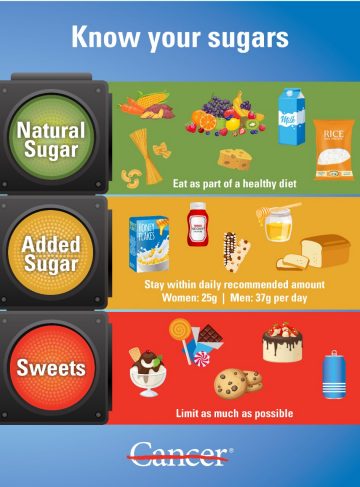
Link Between Diet & Cancer: How Nutrition Affects Prevention Strategies. Discover the crucial Link Between Diet & Cancer & how what you eat can influence prevention strategies for a healthier life and glow natural wellness. Learn more!

The Link Between Diet & Cancer
Link Between Diet & Cancer: How Nutrition Affects Prevention Strategies
Link Between Diet & Cancer
The relationship between nutrition & cancer has grown increasingly significant in the field of healthcare over the past few decades. I have personally witnessed relatives struggle with various forms of cancer, which has led me to delve deeper into the Link Between Diet & Cancer. It became evident to me that the food we consume may play a pivotal role in either increasing or decreasing our cancer risks. Researchers have been studying how certain dietary patterns can either support or hinder the body in fighting cancer cells. This article seeks to explore that connection in detail, examining how the right nutrition can contribute to cancer prevention strategies.
Understanding Dietary Patterns & Cancer Risk
Dietary patterns are defined by the types of foods consumed regularly & how they fit into a person’s overall diet. A diet high in fruits, vegetables, whole grains, & lean proteins can actively protect against certain types of cancer. Conversely, diets rich in processed foods, red meat, & added sugars may increase cancer risks. This concept is supported by studies indicating that populations adhering to plant-based diets demonstrate lower rates of certain cancers.
| Diet Type | Cancer Risk |
|---|---|
| Plant-Based | Lower Risk |
| High in Processed Foods | Higher Risk |
These findings emphasize the influence of diet on cancer prevention strategies. By focusing on what you eat, you can potentially alter your risk factors significantly. Making conscious decisions at the grocery store could have a lasting impact on your health & well-being.
The Role of Antioxidants in Cancer Prevention
Many foods, particularly fruits & vegetables, contain antioxidants that play a vital role in safeguarding the body. Antioxidants combat oxidative stress, which can lead to cellular damage & promote cancer development. Foods like berries, nuts, green leafy vegetables, & dark chocolate are rich in antioxidants. Incorporating these items into your daily diet is an excellent preventive strategy when considering the Link Between Diet & Cancer.
- Blueberries
- Spinach
- Sweet Potatoes
- Green Tea
Regular intake of these antioxidant-rich foods can support your immune system & potentially reduce inflammation, which is often a precursor for various cancers. Therefore, a well-rounded diet abundant in antioxidants is not just a recommendation; it is a strategic approach to mitigate cancer risks.
Red Meat, Processed Foods, & Their Correlation to Cancer
Consumption of red & processed meats has been linked to various types of cancer, most notably colorectal cancer. It is believed that substances formed during the processing or cooking of meat can lead to the formation of carcinogenic compounds. High-temperature cooking methods, such as grilling or broiling, produce harmful substances that could contribute to cancer development.
| Food Type | Cancer Association |
|---|---|
| Processed Meats | Colorectal Cancer |
| Grilled Red Meats | Other Cancers |
Shifting dietary habits away from red & processed meats translates to a healthier lifestyle, thus lowering potential cancer risk. Individuals can opt for plant-based proteins like beans, lentils, & tofu to fill their plates while ensuring they get essential nutrients.
The Impact of Sugar & Refined Carbohydrates
Recent studies suggest that diets high in sugar & refined carbohydrates may play a role in cancer development. Foods high in added sugars & refined grains can lead to insulin resistance, obesity, & inflammation all factors linked to cancer risks. Understanding the consequences of these dietary choices is crucial for cancer prevention.
- Sugar-Sweetened Beverages
- White Bread
- Baked Goods with High Sugar
To combat these risks, incorporating whole foods into your meals is essential. Whole grains, fruits, & vegetables provide not only nutrition but also regulate blood sugar levels. Being aware of your caloric intake & focusing on wholesome ingredients can significantly influence your cancer risk profile.
Importance of Healthy Fats
The type & quality of fats consumed can also influence cancer risk according to the Link Between Diet & Cancer. Healthy fats, such as those found in avocados, nuts, seeds, & olive oil, can furnish your body with vital nutrients while reducing inflammation. In contrast, trans fats & excessive saturated fats, commonly found in fried & processed foods, have been linked to higher cancer risk.
| Fat Type | Cancer Risk |
|---|---|
| Trans Fats | Higher Risk |
| Omega-3 Fatty Acids | Lower Risk |
Choosing healthy fats over unhealthy options can be a simple yet effective method for supporting cancer prevention strategies. Adding fatty fish like salmon to your diet can also confer additional benefits due to their omega-3 content. Every small dietary change can make a significant impact over time.
Fiber & Its Protective Benefits
Various studies have shown that a diet high in dietary fiber can play a crucial role in reducing the risk of colorectal cancer. Fiber-rich foods promote bowel health & aid in the elimination of toxins from the body. Whole grains, fruits, vegetables, & legumes are excellent sources of fiber that should be integral components of a cancer-preventive diet.
- Oats
- Chickpeas
- Raspberries
- Broccoli
When you increase your fiber intake, you are effectively promoting a healthier digestive system, which may decrease the chances of cancer development. Particularly, the soluble fiber found in fruits & vegetables can help regulate cholesterol levels & promote overall well-being.
The Influence of Alcohol Consumption
Alcohol consumption has been linked to an increased risk of several cancers, including breast & liver cancer. The body metabolizes alcohol into acetaldehyde, a known carcinogen. Even moderate consumption of alcohol can increase cancer risk, making it imperative to approach drinking judiciously.
| Alcohol Amount | Cancer Risk |
|---|---|
| 1 Drink/Day | Increased Risk |
| 2+ Drinks/Day | Significantly Higher Risk |
Those looking to lower their cancer risk may consider reducing or eliminating alcohol from their diet. Instead of alcoholic beverages, consider hydrating with water, herbal teas, or freshly squeezed juices. It is also essential to understand personal limits & how consumption affects overall well-being.
Practical Tips for Integrating Cancer-Preventive Foods
Adopting a cancer-preventive diet requires commitment & knowledge. A few strategies can facilitate this journey:
- Plan meals ahead of time to include a variety of plant-based foods.
- Choose whole over processed foods to maintain nutritional integrity.
- Cook using healthy methods such as steaming, baking, or broiling.
- Stay informed about the nutritional aspects of what you’re consuming.
These practical tips can help instill better eating habits that contribute to lower cancer risks. Additionally, consulting with a nutritionist can provide personalized guidance tailored to individual health needs.
The Role of Supplements in Cancer Prevention
While it’s generally best to obtain nutrients from food, certain supplements may also have a role in cancer prevention. Some studies suggest that vitamin D & omega-3 fatty acid supplements might help reduce specific cancer risks. Be that as it may, more research is necessary to understand their full efficacy & optimal dosages.
| Supplement | Potential Benefits |
|---|---|
| Vitamin D | Bone Health, Possible Cancer Risk Reduction |
| Omega-3 Fatty Acids | Anti-inflammatory Properties |
It is crucial to consult a healthcare professional before adding any supplements to your routine, as over-supplementation can have adverse effects. The focus should remain on a well-balanced diet while using supplements as an adjunct when necessary.
Conclusion on the Link Between Diet & Cancer
“Diet not only sustains life but could also be a crucial player in cancer prevention.” – Crawford Heidenreich I
The intricate relationship between diet & cancer underscores the importance of nutritional choices in the quest for health. As the body of evidence continues to grow, the potential of diet as a form of preventive health strategy becomes increasingly clear. By making thoughtful & informed dietary choices, the link between diet & cancer can become a pillar of health for many individuals.

What is the link between diet & cancer?
A healthy diet can potentially reduce the risk of developing certain types of cancer. Foods rich in fruits, vegetables, whole grains, & lean proteins may help protect the body by providing essential nutrients & antioxidants that fend off cellular damage.
Can certain foods increase Link Between Diet & Cancer risk?
Yes, certain foods can increase cancer risk. Diets high in processed meats, red meats, & sugary beverages have been linked to higher rates of cancer, particularly colorectal cancer. Consuming high amounts of alcohol & low amounts of fiber can also contribute to increased risk.
How does obesity relate to cancer risk?
Obesity is a significant risk factor for several types of cancer, including breast, colon, & endometrial cancers. Excess body fat can lead to changes in hormone levels & inflammation, both of which can encourage the development of cancerous cells.
Are organic foods safer against cancer?
While organic foods can reduce exposure to certain pesticides & chemicals, there is limited direct evidence that they significantly lower cancer risk. A balanced diet rich in whole, minimally processed foods is generally the best approach for cancer prevention.
What nutrients are important in Link Between Diet & Cancer prevention?
Key nutrients that may help in cancer prevention include vitamins C & E, selenium, folate, & various phytochemicals found in colorful fruits & vegetables. These nutrients can help protect cells from damage & support the immune system.
How does a vegetarian diet influence Link Between Diet & Cancer?
A vegetarian diet, which is typically high in fruits, vegetables, & whole grains, may be linked to a lower risk of certain cancers. This could be due to increased fiber intake & lower consumption of processed & red meats.
Do dietary supplements prevent cancer?
While some dietary supplements may provide benefits, there is insufficient evidence that they can prevent cancer. It’s generally recommended to obtain nutrients from foods rather than relying on supplements for cancer prevention.
Is there a role for fasting or specific diets in cancer prevention?
Some studies suggest that intermittent fasting & specific dietary patterns may have a role in cancer prevention, but more research is needed. Diets focusing on plant-based foods & healthy fats are often recommended for their overall health benefits.
What is the recommended diet for cancer prevention?
A well-rounded diet for cancer prevention typically includes plenty of fruits & vegetables, whole grains, lean proteins, & healthy fats while limiting processed foods, red meats, added sugars, & alcohol intake.
How does hydration influence cancer risk?
Staying properly hydrated is essential for overall health. While direct evidence linking hydration to cancer prevention is limited, good hydration can support healthy organ function & nutrient transport, indirectly influencing cancer risk.
What lifestyle factors besides diet impact cancer risk?
In addition to diet, other lifestyle factors such as physical activity, smoking cessation, & limited alcohol consumption play significant roles in reducing cancer risk. Maintaining a healthy weight also contributes significantly to overall cancer prevention strategies.
Understanding the Link Between Diet & Cancer is crucial for making healthy choices. By focusing on what we eat, we can help lower our risk of cancer & improve our overall health. Simple changes, like eating more fruits & vegetables, can have a big impact. Remember, the Link Between Diet & Cancer isn’t just about avoiding certain foods but embracing nutritious ones. By being mindful of our diets, we empower ourselves to take charge of our health. So, let’s prioritize a balanced diet & stay informed on how it contributes to cancer prevention. Your plate can be your first step towards health!
Diseases & Conditions
Prevent Childhood Obesity
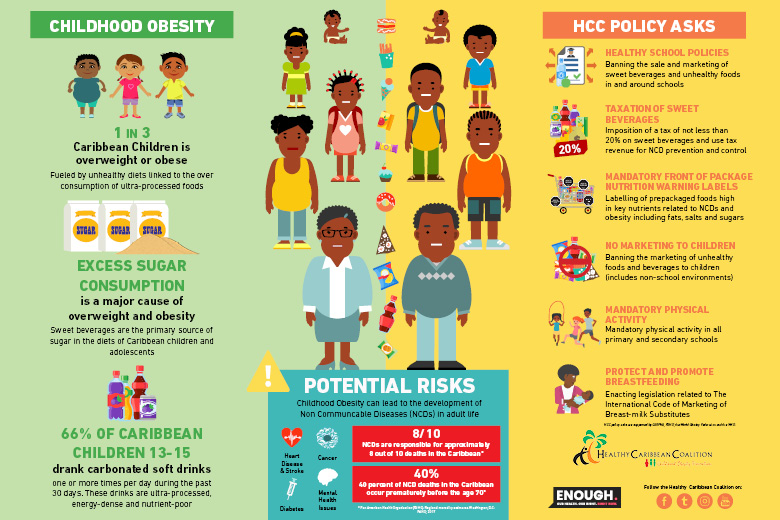
Prevent Childhood Obesity: Tips for Healthy Habits & Active Lifestyles. Learn how to Prevent Childhood Obesity with easy tips for healthy eating & active play. Help your kids build lifelong habits for a brighter future!

Importance of Preventing Childhood Obesity
Prevent Childhood Obesity because the foundation of a healthy lifestyle is established during youth. The rising prevalence of obesity in children is alarming, with significant long-term impacts on physical, emotional, & social well-being. Obesity can lead to various health issues such as diabetes, heart disease, & mental health challenges like anxiety & depression. And don’t forget, children with obesity often face social stigmas, leading to bullying & reduced self-esteem. Parents, caregivers, & educators must recognize the critical role they play in shaping a child’s lifestyle. Advocating for healthy habits not only protects children but also sets them up for lifelong wellness & resilience against diet-related illnesses. When communities rally together to promote healthy eating & active living, the odds of fostering a healthier generation increase markedly.
Encouraging Balanced Nutrition at Home
To Prevent Childhood Obesity, the first step is to cultivate balanced nutrition habits within the home. This means making healthier food choices readily available & teaching children about the benefits of nutritious foods. One effective strategy is involving children in meal planning & preparation. This participation can spark interest in healthy eating & make children more willing to try new foods. And another thing, maintaining a stocked pantry with wholesome snacks, such as fruits, vegetables, nuts, & whole grains, is crucial. Regular family meals can also promote healthier eating patterns, allowing caregivers to model proper portion sizes & encourage mindful eating habits.
- Include a variety of fruits & vegetables in family meals.
- Limit sugary drinks & replace them with water or milk.
- Teach children to read nutrition labels to make informed choices.
- Encourage trying new recipes & cuisines to discover healthy options.
Limit Screen Time & Encourage Outdoor Play
Limiting screen time is essential in the effort to Prevent Childhood Obesity. Excessive screen time contributes to sedentary behavior & often leads to unhealthy snacking. Setting boundaries on daily screen time can encourage children to engage in more active pursuits. Alongside reducing screen usage, promoting outdoor play & physical activity is necessary. Designating specific times for physical activities, such as playing sports, riding bikes, or simply walking in a park, can create excitement around being active. Schools & communities can also create organized activities to foster a love for movement.
| Activity Ideas | Benefits |
|---|---|
| Sports Teams | Enhance teamwork & physical skills. |
| Family Hikes | Bonding time while enjoying nature. |
| Dancing | Improves coordination & is fun! |
Modeling Healthy Behaviors as Caregivers
To effectively Prevent Childhood Obesity, caregivers must model healthy behaviors. Children often imitate the habits of adults around them. This includes dietary choices, physical activity levels, & attitudes towards health. By demonstrating a commitment to a balanced lifestyle, caregivers can influence children significantly. Engaging in family exercise sessions, cooking healthy meals together, or reading nutrition labels as a family can reinforce healthy habits conversationally & practically. Sharing experiences of making healthier choices & discussing the importance of well-being can further inspire children to adopt those habits themselves.
- Share personal fitness goals & outcomes with children.
- Encourage a family activity night where everyone participates.
- Discuss the health benefits of regular exercise & nutritious meals.
Incorporating Physical Activity into Daily Routines
Integrating physical activity into daily routines is paramount to Prevent Childhood Obesity. By incorporating movement into regular activities, children learn that being active can be enjoyable & effortless. This can be as simple as choosing to walk or bike to school instead of driving. Ensuring children have the opportunity for movement during playtime at school or in the neighborhood can significantly contribute to their overall activity level. Establishing a routine that includes short intervals of activity, such as stretching or quick exercises during breaks, can also keep the body engaged & energized.
| Time Slot | Suggested Activity |
|---|---|
| Morning | Wake up stretches or yoga. |
| Afternoon | Active play with friends or sports. |
| Evening | Family walks or sports games. |
Creating a Supportive Environment for Healthy Growth
To effectively Prevent Childhood Obesity, creating supportive environments is critical. This can include both home & community settings that encourage & facilitate healthy decisions. Homes should be structured to be conducive to physical activity by keeping active toys accessible & designating spaces for play & exercise. Community resources such as parks, recreational centers, & sports teams should be promoted to provide children with ample opportunities for physical activities. Schools also have a vital role in creating a supportive environment by offering nutritious meals in cafeterias, facilitating physical education classes, & ensuring a safe space for outdoor activities.
- Encourage participation in community sports leagues.
- Take advantage of local parks for family outings.
- Advocate for healthier food options in schools.
Instilling Mindful Eating Practices
Mindful eating practices are essential in the effort to Prevent Childhood Obesity. Teaching children to pay attention to their hunger cues helps them develop a better relationship with food. This can include encouraging children to eat slowly, without distractions, & listen to their bodies. Mindful eating allows children to distinguish between hunger & boredom or emotional eating. Practicing portion control & encouraging variety during meals also plays a crucial role. Caregivers can lead this practice by serving appropriate portions & discussing the importance of not rushing meals, further reinforcing the principle of enjoying food rather than consuming it mindlessly.
| Mindful Eating Tips | Description |
|---|---|
| Slow Down | Eating slowly allows time to feel full. |
| Eliminate Distractions | Focus on meals without screens. |
| Portion Control | Teach children about appropriate serving sizes. |
Community Engagement & Resources
Community plays a vital role in the initiative to Prevent Childhood Obesity. Collective efforts can lead to better access to resources & support for healthy lifestyles. Community centers can host family fitness days, nutrition workshops, or cooking classes. Collaborating with local businesses to provide healthy options in school vending machines or sponsor sports teams also contributes positively. And another thing, communities can advocate for better urban planning that encourages safe environments for physical activity, such as developing walking trails, sports fields, & playgrounds. All these efforts help create a culture of health that can significantly impact children’s behavior.
- Participate in community health fairs.
- Join or form walking groups in your neighborhood.
- Support local farms or markets for fresh produce.
“By focusing on health & fitness, we can dramatically change the trajectory of the next generation & Prevent Childhood Obesity.” – Marcelle Swift
Educating Children on Health & Nutrition
Education is a cornerstone in the effort to Prevent Childhood Obesity. Teaching children about the importance of nutrition & physical activity can empower them to make healthier choices. This education can begin at home, where caregivers can discuss the benefits of fruits, vegetables, & whole grains compared to processed foods. Schools can implement health classes that cover topics such as nutrition labels, caloric intake, & food groups. Incorporating hands-on activities, such as gardening or cooking classes, can make learning about healthy eating fun & interactive. By providing children with knowledge, we enable them to take charge of their health.
| Education Topics | Example Activities |
|---|---|
| Nutritional Value of Foods | Compare different snacks during class. |
| Understanding Food Labels | Work on finding healthy options in local stores. |
| Benefits of Staying Active | Design a “movement calendar” at school. |
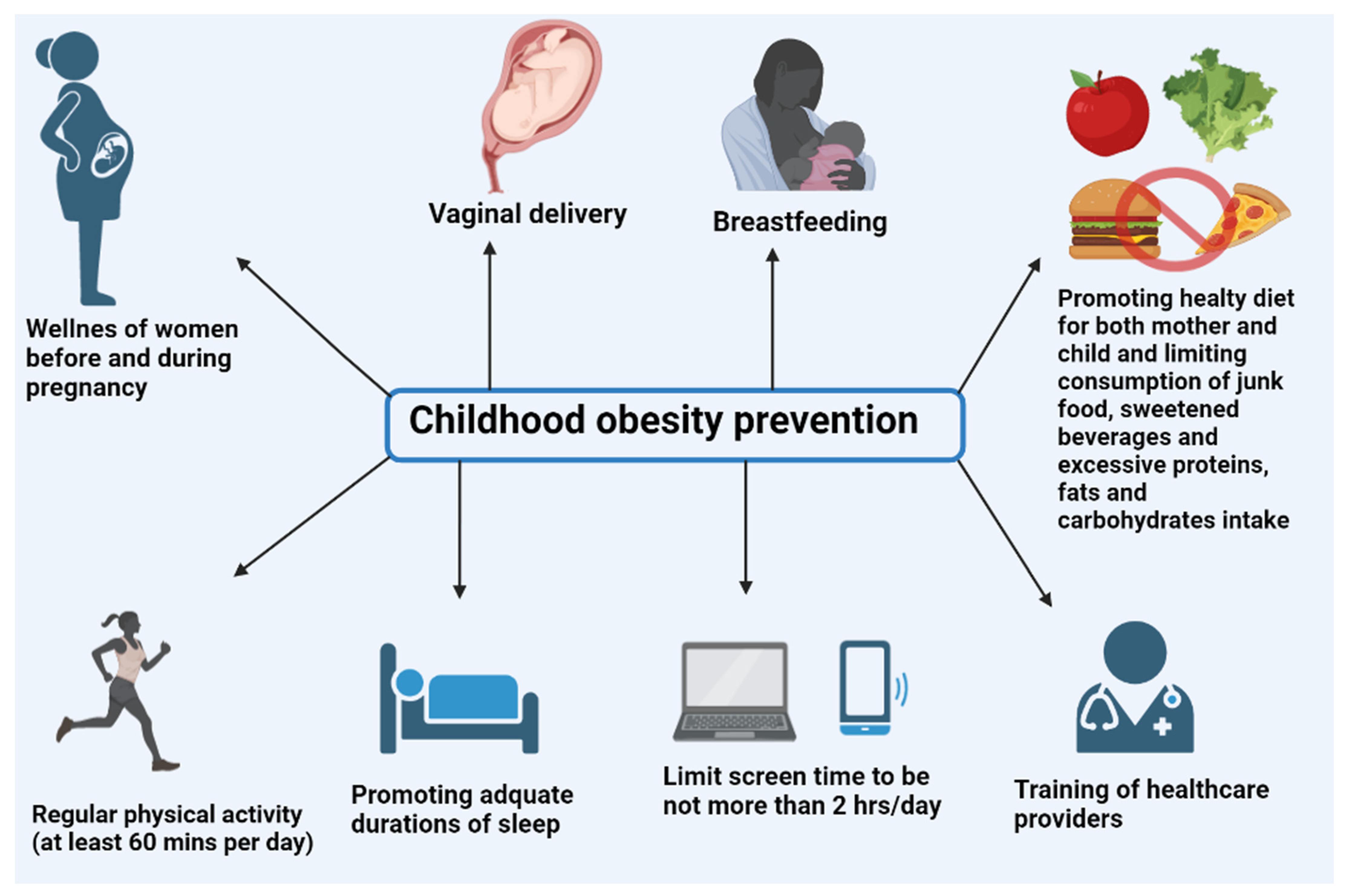
What are some tips for preventing childhood obesity?
To prevent childhood obesity, encourage healthy eating habits by providing nutritious foods, limit sugary drinks & snacks, promote regular physical activity, set a good example with your own lifestyle choices, & create a supportive environment that fosters healthy behaviors.
How can parents encourage healthy habits in children?
Parents can encourage healthy habits by involving children in meal planning & preparation, making physical activities fun & accessible, setting consistent meal & snack times, & promoting limits on screen time to encourage more active play.
What role does physical activity play in preventing obesity?
Physical activity is crucial in preventing obesity as it helps burn calories, builds muscle, & promotes overall health. Regular exercise keeps metabolism high & is vital for maintaining a healthy weight.
How important is nutrition in preventing childhood obesity?
Nutrition is extremely important in preventing childhood obesity. A balanced diet rich in fruits, vegetables, whole grains, & lean proteins, while limiting processed foods, helps children develop healthy eating patterns that can last a lifetime.
What are some easy ways to make meals healthier for kids?
To make meals healthier for kids, try incorporating more fruits & vegetables, whole grains, & lean proteins. You can also get creative with food presentation, involve kids in cooking, & substitute healthier ingredients in their favorite dishes.
How can schools contribute to preventing childhood obesity?
Schools can contribute by offering healthy meal options, providing nutrition education, promoting physical activity during & after school hours, & creating an environment that encourages healthy eating & exercise among students.
What is the impact of screen time on childhood obesity?
Excessive screen time is linked to childhood obesity as it often leads to a sedentary lifestyle, reduces the time available for physical activity, & can encourage snacking on unhealthy foods. Setting limits on screen time can help mitigate these effects.
Are there community programs to help prevent childhood obesity?
Yes, many communities offer programs aimed at preventing childhood obesity, including after-school sports, cooking classes, family fitness events, & wellness initiatives that promote healthy living & active lifestyles for children & families.
What can be done to get kids moving more?
To get kids moving more, parents can engage them in fun physical activities, such as dancing, biking, swimming, or playing sports. And another thing, encouraging outdoor play & limiting screen time can help increase overall activity levels.
Why is it important to establish healthy habits early in life?
Establishing healthy habits early in life is important because childhood is a critical time for growth & development. Early healthy behaviors can lead to a lower risk of obesity, better physical health, & improved emotional well-being as children grow into adulthood.

Conclusion
To effectively Prevent Childhood Obesity, it’s important to embrace healthy habits & an active lifestyle. Parents & caregivers play a vital role by encouraging nutritious eating & regular physical activity. Simple changes, like cooking together or playing outside, can make a big difference. Remember, it’s not just about weight, but instilling lifelong habits. By fostering a supportive environment & being positive role models, we can help children make smart choices. Let’s work together to Prevent Childhood Obesity & give our kids the chance to grow happy & healthy. Every little step counts!
Diseases & Conditions
Impact of Smoking on Your Health

Impact of Smoking on Your Health: Risks & Consequences Explained. Discover the Impact of Smoking on Your Health with our easy guide. Learn about the risks & consequences to make informed choices for a healthier life!

Exploring the Effects of Smoking on Your Health
Smoking continues to be a major public health issue, affecting countless individuals around the world. The effects of smoking on your health go well beyond the short-term symptoms linked to the habit. It can lead to a range of serious conditions, including various types of cancer and respiratory problems, with consequences that can be severe and widespread. My personal insight into these effects deepened when I saw a close family member face the challenges brought on by smoking. This experience was a turning point for me, sparking a strong interest in understanding the dangers tied to this habit. Recognizing the serious risks may encourage others to rethink their decisions.
Health Risks Associated with Smoking
Smoking carries a wide range of health hazards that can reduce life expectancy and lower the quality of life. Those who smoke face a significantly increased risk of developing several serious conditions, such as lung cancer, heart disease, and chronic obstructive pulmonary disease (COPD). The harmful substances in cigarettes harm the lungs and airways, resulting in respiratory issues and reduced lung capacity. Studies indicate that smokers are 15 to 30 times more likely to be diagnosed with lung cancer compared to non-smokers. Additionally, it’s important to remember that smoking doesn’t only affect the smoker; it also poses risks to others through exposure to secondhand smoke.
Health Risk Statistics-
| Lung Cancer | Smokers have a 15 to 30 times higher risk of developing lung cancer. |
|---|---|
| Heart Disease | It accounts for around 20% of all heart disease-related deaths. |
| COPD | An astonishing 95% of chronic obstructive pulmonary disease (COPD) cases are linked to smoking. |
Effects on Respiratory Health
The effects of smoking on your health are especially noticeable when it comes to respiratory issues. Chronic bronchitis and emphysema are two serious conditions that are closely associated with smoking. Breathing in harmful substances causes inflammation and harm to lung tissue. Symptoms such as coughing, wheezing, and persistent phlegm are frequently observed. As these conditions progress, they can result in considerable respiratory problems and greatly restrict a person’s capacity to participate in physical activities. Even those who have quit smoking may still face respiratory challenges long after they stop, highlighting the enduring impact of this habit.
The Link Between Smoking & Cancer
One of the most significant effects of smoking is its strong association with cancer. While lung cancer is the most recognized type, smoking also heightens the risk of developing cancers in the mouth, throat, esophagus, bladder, kidneys, and pancreas. Tobacco smoke is made up of more than 7,000 chemicals, many of which are known to cause cancer. Consequently, individuals who smoke are at a greater risk of these cancers than those who do not. In fact, approximately 85% of lung cancer cases are linked to smoking, highlighting the severe impact smoking has on health concerning cancer.
Increased risk of lung cancer-
- Mouth & throat cancers
- Esophageal cancer
- Bladder cancer
- Kidney & pancreatic cancer
Cardiovascular Risks from Smoking
Smoking significantly harms cardiovascular health. The harmful substances found in cigarette smoke cause damage to the arteries, which encourages plaque accumulation and elevates blood pressure. This chain reaction greatly increases the risk of heart attacks and strokes. Evidence suggests that smokers face a two to four times higher risk of heart disease compared to their non-smoking counterparts. Additionally, the ongoing inflammatory response triggered by smoking can result in vascular issues, leading to decreased blood flow and conditions like peripheral artery disease. The effects of smoking on health in this regard are crucial, as cardiovascular diseases continue to be one of the top causes of death globally.
Cardiovascular Risk Effect
Elevated Blood Pressure Smoking elevates blood pressure, putting extra stress on the cardiovascular system.
Heart Attack Risk Smokers face a two to four times higher chance of having a heart attack.
Stroke Risk Smoking greatly heightens the likelihood of experiencing an ischemic stroke.
Mental Health Implications of Smoking
The association between smoking and mental health is a multifaceted one. Studies reveal a troubling association between nicotine dependence and heightened levels of anxiety and depression. While many smokers claim they use cigarettes to manage stress, the long-term consequences can actually worsen mental health conditions. Additionally, smoking can hinder the effectiveness of several mental health medications, making it more challenging for individuals to maintain stability in their mental wellbeing. The effects of smoking extend into psychological health, complicating treatment plans and overall emotional wellness.
Increased rates of depression
- Anxiety exacerbation
- Interference with mental health treatments
- Higher stress levels associated with nicotine withdrawal
Impact on Reproductive Health
Smoking poses significant reproductive health risks for both men and women. In women, it is associated with pregnancy complications like low birth weight, premature delivery, and a higher chance of miscarriage. Furthermore, smoking can negatively impact fertility, making it harder to conceive. This can cause men to experience difficulties, including erectile dysfunction and a decline in sperm quality. The effects of smoking on reproductive health underscore not only individual health concerns but also wider implications for family planning and the health of mothers and children.
Reproductive Health Issue Impact
| -Fertility Challenges in Women Can make it harder to get pregnant and may lead to complications during pregnancy. -Erectile Dysfunction in Men Results in decreased sperm quality and difficulties with sexual performance. -Secondhand Smoke & Public Health |
The effects of smoking reach far beyond just the person who smokes; secondhand smoke presents a serious danger to those who do not smoke. Exposure to secondhand smoke can lead to numerous health concerns for both children and adults, including respiratory infections, asthma, and the risk of sudden infant death syndrome (SIDS). Research indicates that non-smokers regularly exposed to secondhand smoke have a 25-30% higher risk of developing heart disease. While public health initiatives have begun to tackle this issue, it is crucial to keep raising awareness about how smoking affects not only your health but also the health of others.
- Higher susceptibility to asthma and respiratory infections in children
- Connection to heart disease and lung cancer in adults
- Difficulties for individuals with prior health conditions
- Impact on early mortality rates
Economic Consequences of Smoking
Along with its health hazards, smoking places a heavy economic load on both people and the community as a whole. For individuals, the costs encompass not only the continuous purchase of cigarettes but also the potential medical expenses linked to treating illnesses caused by smoking. On a larger scale, the healthcare system faces significant financial strain from treating smoking-related diseases, with billions allocated each year for this care. The effects of smoking on health also ripple into the economy, diminishing overall productivity and driving up healthcare expenses over time.
Economic Impact Cost Factor
- Personal Expenditure on Cigarettes
- Yearly expenses can reach into the thousands based on individual smoking habits.
- Healthcare Expenses for Smoking-related Conditions
- The healthcare system incurs billions in costs annually due to smoking-related illnesses.
Strategies for Quitting Smoking
Giving up smoking is a crucial decision that can greatly benefit an individual’s overall well-being. There are numerous methods available to assist with this change, including nicotine replacement options like patches and gum, as well as counseling and medication. These tools can alleviate withdrawal symptoms and cravings, making it more likely for someone to successfully quit. Additionally, joining support groups, whether online or face-to-face, can offer valuable emotional and motivational encouragement. Ultimately, recognizing the effects of smoking on your health underscores the necessity of seeking assistance and creating a tailored plan to stop smoking.
- If you want to give up on smoking then you need to accept some challenges until you success.
- Consider nicotine replacement options.
- Seek counseling or support groups.
- Stay physically active to reduce cravings.
Long-term Health Benefits of Quitting Smoking
When someone chooses to stop smoking, their body starts to recover right away, highlighting the remarkable ability of human health to bounce back. Just 20 minutes after quitting, both heart rate and blood pressure begin to decrease. In a matter of weeks, breathing becomes easier, and over the months that follow, the chances of developing heart disease drop considerably. In the long run, those who have quit smoking face reduced risks of various cancers, better reproductive health, and an overall improved quality of life. The negative effects of smoking on health lessen significantly after quitting, and recognizing these advantages can serve as a strong encouragement for individuals looking to give up the habit.
Timeframe Health Benefits
| 20 Minutes | Heart rate and blood pressure return to normal levels. |
| 2 Weeks to 3 Months | Enhanced lung function and better circulation. |
| 1 Year | The risk of developing heart disease is reduced by 50%. |
Conclusion: A Call to Action
The effects of smoking on your health can be daunting, but gaining insight into the wider range of risks can be a powerful motivator for change. The starting point is to understand the health effects and to find help in your efforts to quit. With numerous resources at your disposal, those facing smoking addiction can discover routes to a healthier life. Awareness, education, and community support are crucial in addressing this public health challenge. Now is the moment to transform the understanding of smoking’s impact into proactive steps that enhance both personal well-being and public health overall.
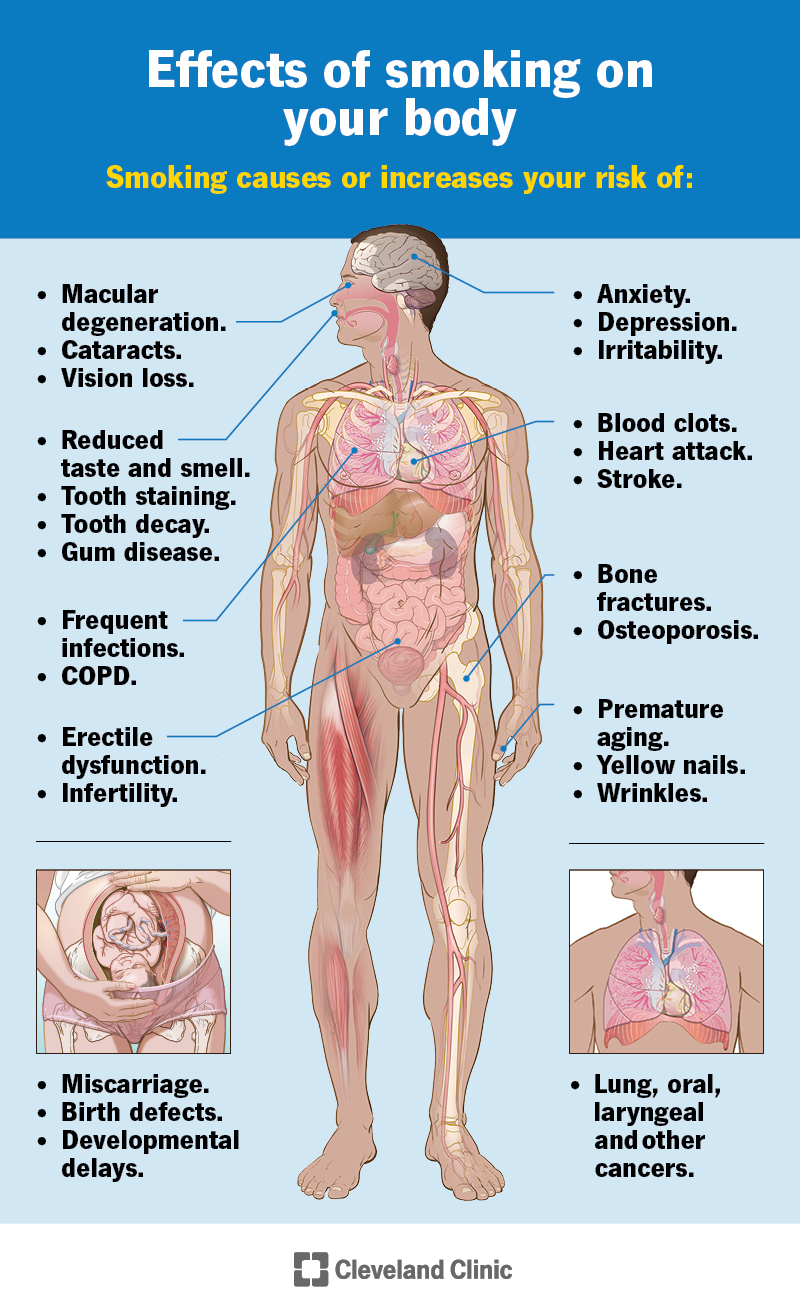
What are the health risks of smoking?
Engaging in smoking can result in various critical health concerns, including lung cancer, heart disease, COPD, and stroke. Moreover, it raises the likelihood of respiratory infections and can harm overall immune health.
How does smoking affect lung health?
Smoking adversely affects the airways and lung tissue, leading to inflammation and a decline in lung function. This elevates the risk of conditions such as emphysema and bronchitis. As the years pass, it can make breathing increasingly difficult and less efficient.
Can smoking cause cancer?
Certainly, smoking ranks as a top cause of various cancers, particularly lung cancer. It is also related to cancers of the mouth, throat, esophagus, pancreas, bladder, stomach, kidneys, and cervix, among others.
What are the effects of secondhand smoke?
Non-smokers face considerable health threats from secondhand smoke, which can elevate the risk of lung cancer, heart disease, and respiratory complications. Children are particularly vulnerable, as it may contribute to asthma and other developmental challenges.
Is smoking addictive?
Absolutely, nicotine, which is the key addictive element in tobacco, fosters a dependency that can make quitting quite challenging for numerous smokers. When they try to quit, they might face withdrawal symptoms like irritability, a surge in appetite, and intense cravings for nicotine.
What is the impact of smoking during pregnancy?
When a mother smokes during pregnancy, it can negatively affect both her health and that of her baby. This habit raises the likelihood of miscarriage, early birth, low birth weight, and sudden infant death syndrome (SIDS). Moreover, it can hinder the baby’s development and contribute to health problems later in life.
How does smoking affect mental health?
Compared to non-smokers, smokers are likely to suffer from higher rates of anxiety and depression. Although smoking may serve as a temporary relief for some, evidence suggests that giving it up can lead to significant improvements in mental health.
Can quitting smoking improve health?
For sure! Giving up smoking offers numerous health benefits, including enhanced lung capacity, decreased risk of heart disease and cancer, and an overall improvement in well-being. The healing process in the body begins shortly after quitting, leading to a better quality of life.
What are the long-term consequences of smoking?
Smoking over an extended period can cause chronic health conditions, lower physical fitness levels, and a general decline in quality of life. It can also speed up the aging process and lead to complications from different health problems, which can shorten life expectancy.
Does smoking affect oral health?
Indeed, smoking has a negative impact on oral health. It can cause gum disease, lead to tooth loss, and increase the risk of oral cancer. Moreover, it can slow down recovery after dental procedures.
Are there safe alternatives to smoking?
Some people believe that e-cigarettes and vaping are safer alternatives, but they can still present health dangers and are not without risks. The optimal choice for your health is to refrain from all tobacco and nicotine products.
In conclusion, grasping the effects of smoking on your health is essential for everyone. Smoking affects not only your lungs but also every other part of your body. The consequences, ranging from heart disease to cancer, are serious and should not be overlooked. The positive aspect is that quitting smoking can result in substantial health improvements over time. Whether you smoke or have a loved one who does, acknowledging these dangers is the first step toward a healthier lifestyle. Let’s focus on our well-being and make educated decisions for a brighter future.


 Health & Wellness3 months ago
Health & Wellness3 months ago10 Daily Habits for an Attractive Healthier Lifestyle

 Nutrition3 months ago
Nutrition3 months agoBoost Your Immune System Naturally

 Health & Wellness3 months ago
Health & Wellness3 months agoWater: Key to proper health

 Fitness & Exercise3 weeks ago
Fitness & Exercise3 weeks agoThe Best Proven Diets for Men’s Health And Learn With Glow Natural Wellness

 Health & Wellness3 months ago
Health & Wellness3 months agoHow to manage and reduce stress?

 Fitness & Exercise3 months ago
Fitness & Exercise3 months agoDiet planner for beginners

 Weight loss journey2 months ago
Weight loss journey2 months agoAchieving weight loss goals with glow natural wellness

 Mental Health2 months ago
Mental Health2 months agoHolistic Morning Routines to Kickstart Your Glow Natural Wellness Journey”













